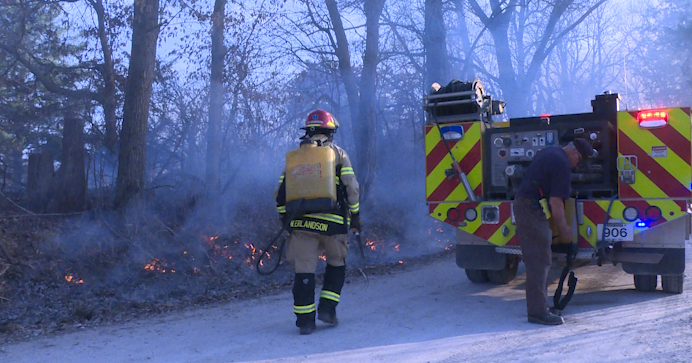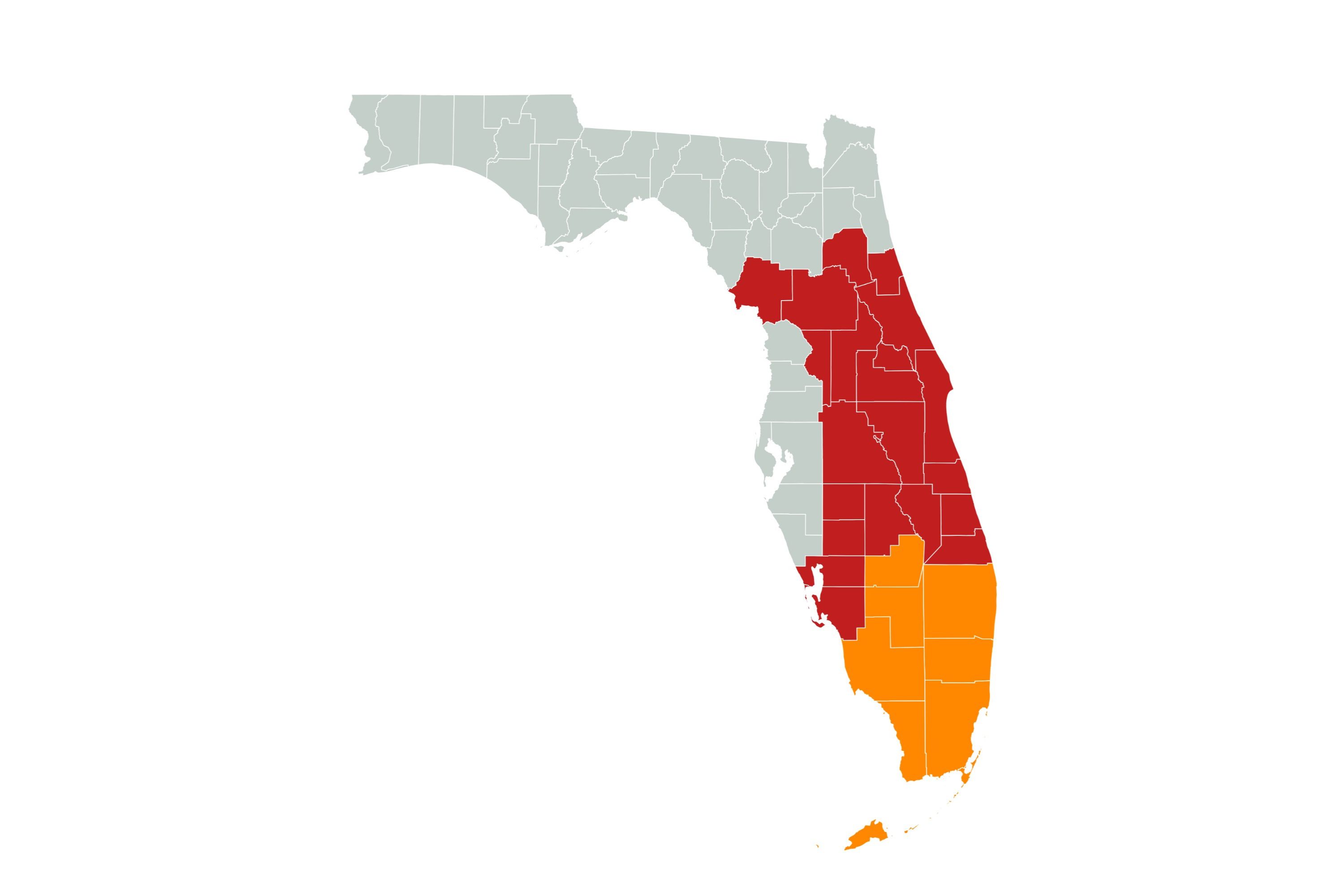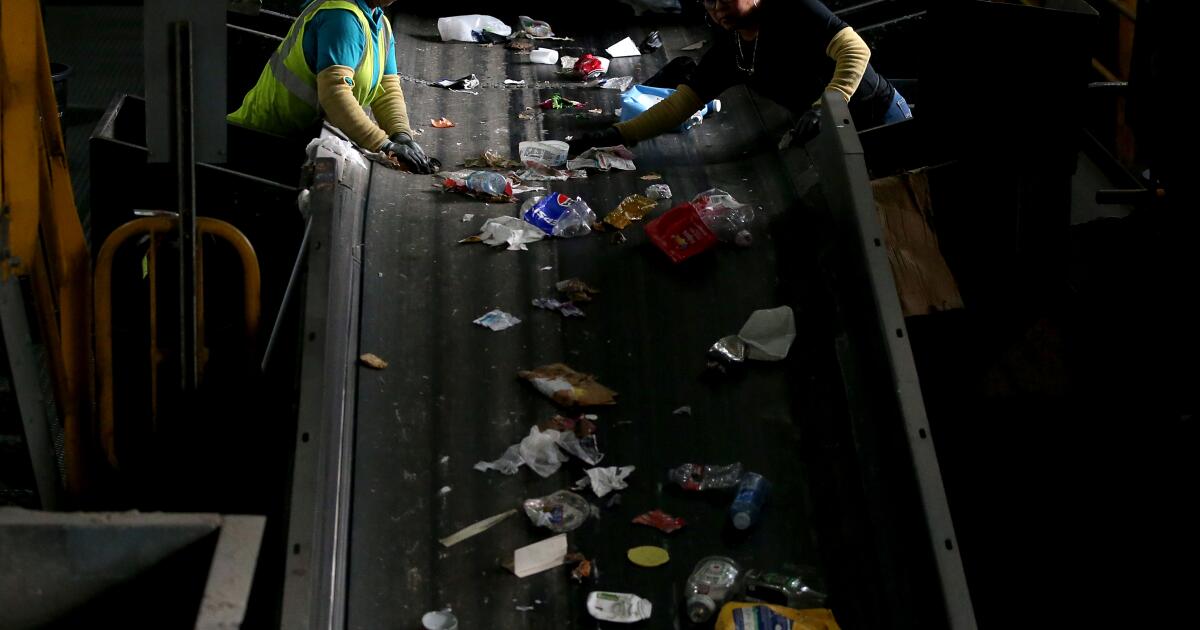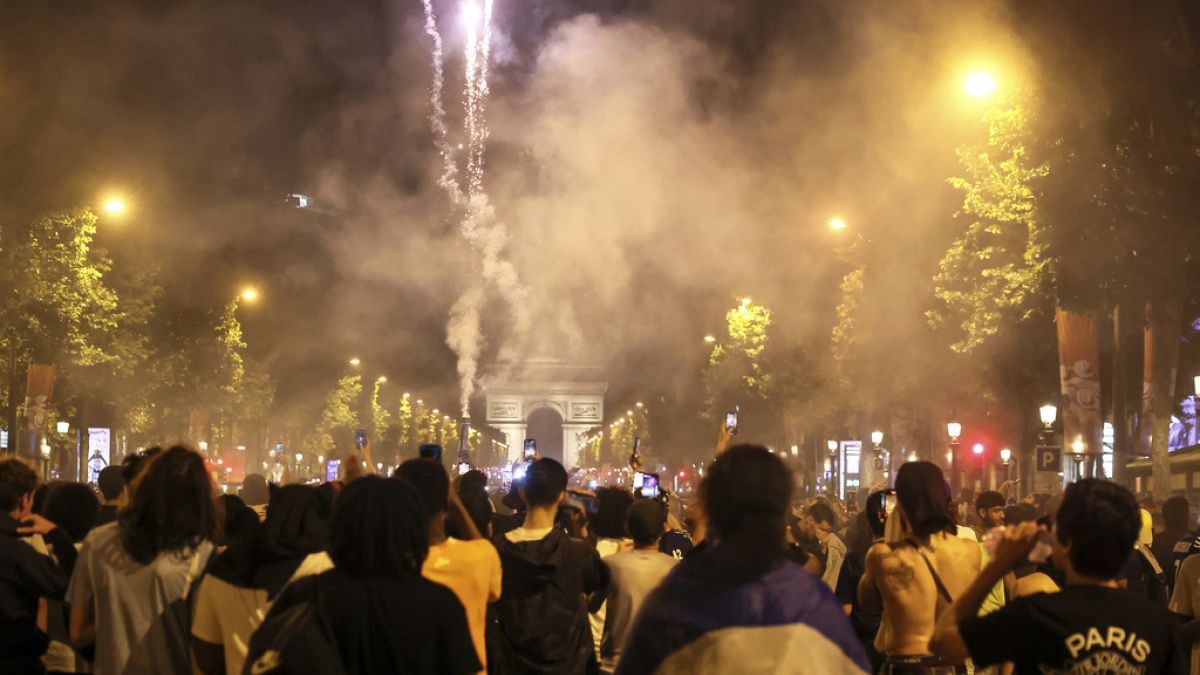Illinois
Should Illinois red flag laws have prevented the Highland Park parade shooting?

CHICAGO (WLS) — Near a year after the deadly mass shooting at Highland Park’s Independence Day parade, the question that still haunts law enforcement is: should red flag laws have intercepted the attacker because of past behavior?
In the ensuing year, authorities have determined there were several instances where accused shooter Robert Crimo III might have been snared by Illinois red flag laws. If he had, it could have prevented him from passing four background checks and legally buying five guns, including the AR-15-style rifle he is charged with using in the shooting.
“I think it’s very difficult to say [if it could have been prevented], but I think one of the factors that is most troubling about the situation is that although a clear and present danger was reported, you subsequently had a family member say in writing and sign a document that says this person is not a threat,” said Illinois State Police Director Brendan Kelly. “‘This person is safe to be able to have a firearm,’ and that’s something very difficult for law enforcement to be able to overcome.”
‘Ripped away’: Man describes day 88-year-old father was gunned down in Highland Park parade shooting
In a winde-ranging interview, Kelly said he is most troubled by how Crimo managed to obtain guns legally after his father, Robert Crimo Jr., vouched for him, saying he wasn’t a danger despite several encounters between his son and law enforcement in 2019, including threats to kill people.
“The family did not take that step,” Kelly said. “They did not use the firearms restraining order and when local law enforcement interacted with them, they gave contradictory information such that they held out that this individual was not a threat. So I think it’s very hard to say under all the circumstances if could there have been some different outcome, particularly when you have a family member that is doing something that makes it more difficult for law enforcement to do their job.”
Crimo Jr. has pleaded not guilty to seven felony counts of reckless conduct after prosecutors said he sponsored his then-19-year-old son’s state firearms application.
Highland Park mass shooting sent CERT team running toward danger
Crimo Jr. declined to speak to the I-Team, and his son, who remains locked up in Lake County Jail, did not respond to an I-Team letter.
Illinois has two red flag laws. The firearms restraining order allows concerned family members to report individuals who pose a risk, prompting temporary removal of their guns. The clear and present danger statute allows police, school officials and mental health professionals to report and achieve gun removal.
“In almost every case, the police come to us with information and they’re either asking for the firearm restraining order or we will suggest it to them,” said DuPage County State’s Attorney Robert Berlin. “They have already spoken to family members the petitioner, they’ll bring the information to us and then we’ll move forward.”
Red flag gun removals have moved at a record pace in DuPage County in the last four years.
READ MORE: Off-duty doctors recall helping Highland Park mass shooting victims
“We have saved lives. We’ve done over 95 petitions that have been granted. A number of these petitioners are let me say that again. A number of the respondents were suicidal and we’re very likely to have hurt themselves or others. Others were involved in violent domestic disputes. There’s no question in my mind that we have saved lives,” Berlin said.
In Lake County, discussions continue about whether the Highland Park mass shooting could have been prevented if Crimo III had been flagged.
“We should be focusing some more public education regarding the access of the firearm restraining order,” said Paul Frank, Lake County Board member. “I think the more that folks recognize that that’s a tool, that we all have a responsibility to say something and to act if we see something if we see a person at risk of harming themselves or others.”
“I think there’s been a cultural shift within much of law enforcement that says hey, let’s err on the side of caution here. We don’t want another tragedy we don’t want another evolving we don’t want another buffalo we don’t want another Highland Park. So let’s take action. Let’s use these tools and I think there are many, many cases which don’t get reported because the incident doesn’t happen,” said Kelly.
Kelly said the state’s red flag laws are becoming stronger tools, with law enforcement now able to look for threatening conduct further into a person’s past. And now when they remove guns, new rules allow police to hold someone’s guns for a year, not just six months.
Kelly also said there is a “tricky balance” for Illinois’ medical community, between reporting dangerous patients and protecting this privacy.

Illinois
Illinois passes $55B budget, with over $800 million in revenue changes

Illinois state lawmakers’ spending plan surpasses last year’s budget by $2 billion, requiring taxpayers to pay over $800 million in additional costs for yet another year of record spending.
With just over 24 hours to conduct a full review, the Illinois General Assembly approved a record-setting $55.2 billion budget for 2026, after a 75-41 House vote sent the 3,000-plus page plan to Gov. J.B. Pritzker. lt follows a familiar fiscal playbook: spend more, fix nothing, hand taxpayers the bill – and toss in a raise for those casting the votes.
To cover the rising costs of education, state pensions and health benefits for government workers, the budget uses short-sighted fixes and ignores structural problems. Once again, it’s taxpayers who will pay the price.
Just before its deadline, Illinois lawmakers passed a record $55.2 billion budget, featuring over $394 million in tax increases, $237 million in fund sweeps and $216 million in delaying funds.
Despite lawmaker claims of budget cuts, the 2026 budget increased by $2 billion compared to 2025. Gov. J.B. Pritzker has grown Illinois’ budget by $16 billion and enacted over 50 tax hikes since taking office in 2019.
Notably, the budget cuts the state’s Property Tax Relief Grant, resulting in an effective $43 million property tax hike. Lawmakers will also receive more than $6,000 in pay raises for the coming year, while public pensioners will receive a benefit spike valued at more than $13 billion. Meanwhile, the budget contributes $5 billion less in pension funding than is necessary to keep the system solvent for future retirees, according to the pension system’s actuaries.
On the revenue side the budget features more than $800 million in revenue gimmicks featuring tax hikes, fund sweeps and temporary measures that fail to truly balance the state’s budget. The process was so rushed that even bill sponsors seem unclear on the exact amount taxpayers will be asked to pay. Among the revenue adjustments are:
- $195 million – $228 million from a new tax amnesty program.
- $171 million from delaying motor fuels tax revenue transfers to the Road Fund.
- $237 million in fund sweeps.
- $72 million in corporate tax hikes.
- $45 million from shorting the state’s Budget Stabilization Fund.
- $36 million from a new sports wagering tax.
- $15 million from removing hotel tax exemptions from short term rental platforms.
- An additional tax on nicotine analogs.
The 2026 budget continues Illinois’ practice of irresponsible and speculative budgeting. Rather than focusing on policy solutions such as a spending cap, right-sizing employee health care costs and constitutional pension reform, lawmakers have opted for a status quo budget. Constantly relying on taxes and fund sweeps encourages irresponsible budgeting, which erodes voters’ trust in Springfield. These tactics reduce the state’s competitiveness, risk potential credit downgrades and can worsen Illinois’ challenges with high unemployment and sluggish growth.
Illinois’ 2026 budget continues the state’s habit of patching budget problems using short-sighted fixes with long-term consequences. Without structural solutions, such as adopting a spending cap and constitutional pension reform, Illinois has continued its cycle of reactive budgeting at taxpayers’ expense.
Illinois
What it’s like to graduate from college while inside an Illinois prison

In many ways, it looked like any college graduation. There were balloons, flowers and squares of frosted marble cake. Rows of family and friends faced a lectern in the fluorescent-lit gymnasium.
But the uniformed guards patrolling the gym underscored that this was no ordinary commencement. It was the first of its kind to take place inside the East Moline Correctional Center, a minimum-security men’s prison on the Illinois-Iowa border about two and a half hours west of Chicago.
As the procession music played from a tabletop speaker, three students in caps and gowns marched up the aisle on Tuesday to become the first graduates of Augustana College to earn their bachelor’s degrees while serving prison sentences.
“This moment is causing a lot of mixed emotions,” said one incarcerated student, Brandon Johnson, addressing the room. “They say there’s no crying in prison, but I brought some tissue just in case.”
The Augustana Prison Education Program, or APEP, began full-time in the fall of 2021 and gained accreditation the following spring. It now has about 30 people enrolled. Students take college courses on everything from physics to poetry — but without access to the Internet and sometimes writing assignments by hand.
“It’s the same Augustana degree requirements, same professors, same rigor — in a prison,” said Sharon Varallo, the program’s executive director.
The first to graduate, David Staples, finished his degree on-campus last year after his release from prison in 2022. Now, he has been joined by four more graduates, including the three present at Tuesday’s ceremony: Jorge Herrejon, Brandon Johnson and Chris Allen.
“I’m so proud of him. He’s taken a bad situation and made the best of it,” said Jim Allen, Chris Allen’s father.
He said he drove three hours from central Illinois the previous night to see his son, who was locked up as a teenager, graduate from college.
There is high demand for educational programs in prison but very few opportunities. Incarcerated students describe their time in the classroom as transformative, and it helps many earn time off their sentences. But only about 600 of the more than 29,000 people in Illinois prisons are enrolled in higher education programs, according to the Education Justice Project at the University of Illinois Urbana-Champaign
Steven Cardenas, a first-year student locked up at East Moline, said it took three tries before he was accepted into APEP.
“It’s an opportunity that’s not given in a lot of different facilities and one that I jumped at immediately because it’s like I get to do something positive with my time,” he said.
Herrejon said he enrolled in college not just for himself but primarily to set an example for his younger siblings. His little brother attended the ceremony.
“I had to change, and they had to see that,” Herrejon said. “And I am proud to say that none of them have followed in the footsteps that I walked before I was incarcerated.”
Herrejon said he’s not sure what he’ll do with his degree once he’s released. He is 31 and has been incarcerated since he was 17.
“I do know that I wanted to be in service of people who are underprivileged, underrepresented…and teach them that there are options in life,” he said.
Lauren Frost is the lead producer of WBEZ’s Prisoncast!, a journalism project serving incarcerated Illinoisans and their loved ones. Listen at 2 p.m. June 15 on 91.5 FM, and go online to wbez.org/prisoncast.
Illinois
19-year-old arrested in Lake County, Illinois in connection with SC party boat shooting that hurt 11
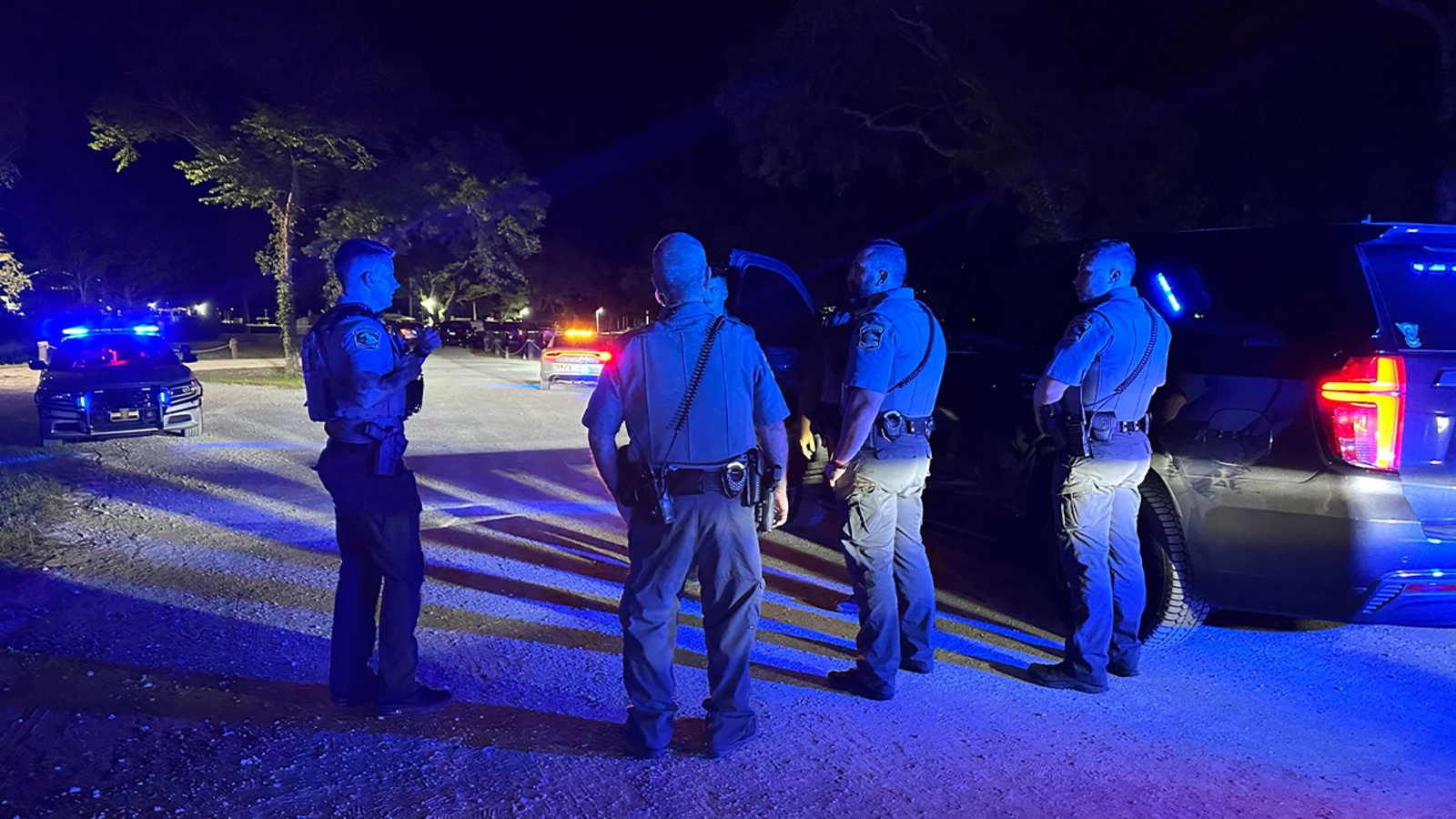
LITTLE RIVER, S.C. — A 19-year-old has been taken into custody in Illinois and authorities said they plan to charge him in a shooting that hurt 11 people after a party boat cruise in South Carolina.
The shooting happened Sunday night on a dock in Little River after a fight on the boat during the three-hour cruise, Horry County Police said.
ABC7 Chicago is now streaming 24/7. Click here to watch
The suspect is expected to be charged with several counts of attempted murder and possession of a weapon during a violent crime, and then officials will seek to extradite him from Lake County, Illinois, back to South Carolina, police said.
The investigation into the shooting continues and more people could be charged, authorities said.
Officials said 120 people partied on the boat over the holiday weekend and were leaving on the dock when the shooting happened. Ten people were wounded by gunfire, mostly on the lower parts of their body, and one person was hurt by a falling speaker, authorities said.
Investigators think only one person fired shots. They didn’t say what started the dispute on the boat and how it led to the shooting on the dock and also would not say what kind of weapon was used.
About 3 miles down the Intracoastal Waterway, a North Myrtle Beach police officer accidentally shot himself in the leg as he tried to get a boat into the water to respond to the shooting scene, officials said.
Little River is about 20 miles northeast of Myrtle Beach. The fishing village is known for its docks and marinas where fishing expeditions, casino boats and several dolphin cruises leave daily.
The video in the player above is from an earlier report.
Copyright © 2025 by The Associated Press. All Rights Reserved.
-

 News1 week ago
News1 week agoRead the Full ‘Make America Healthy Again’ Report
-
Movie Reviews1 week ago
Movie Review: 'Pee-wee as Himself' unmasks Paul Reubens
-

 Technology1 week ago
Technology1 week agoNow you can watch the Internet Archive preserve documents in real time
-
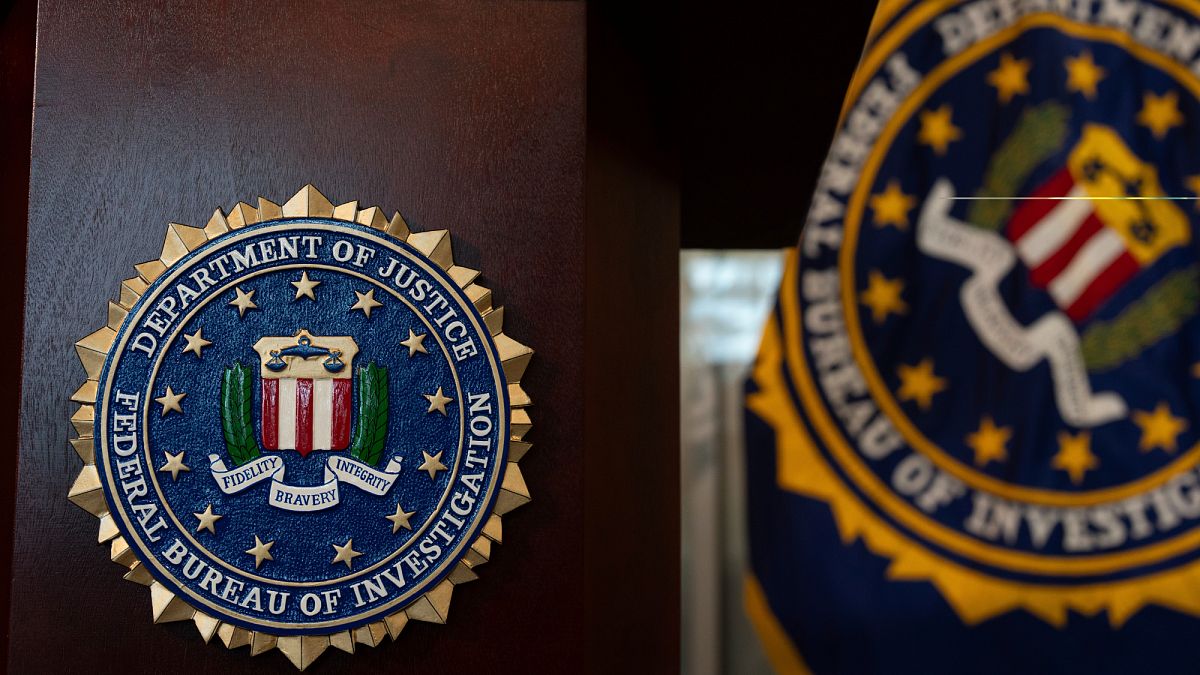
 World1 week ago
World1 week agoNeo-Nazi cult leader extradited to US for plot to kill Jewish children
-

 Technology1 week ago
Technology1 week agoDiscord might use AI to help you catch up on conversations
-

 Movie Reviews1 week ago
Movie Reviews1 week agoMovie review: 'Dogma' re-release highlights thoughtful script – UPI.com
-

 Business1 week ago
Business1 week agoPlastic Spoons, Umbrellas, Violins: A Guide to What Americans Buy From China
-

 Science1 week ago
Science1 week agoTrump Has Cut Science Funding to Its Lowest Level in Decades
